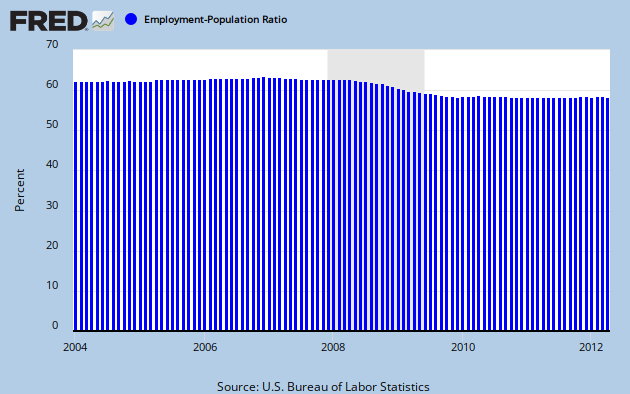PEOPLE NOT LOOKING FOR WORK?
Then what the hell or they doing? Welfare dont pay the rent, buy clothes, pay doctor bills, bill gas and food stamps run out before the end of the month and they are not looking for work? People who are use to working do not stop looking for work and settle for being in a state or mere existence. This is just RRWE rhetoric to further their attacks on Obama. How do you measure people not looking of work?
Unemployment is at 8.1% and RRWE are running scared and will ask anything to make obama look bad before the election. Jobs are being created, businesses are hiring but people are not looking for jobs? Anyone not looking for job do not want a job.
Do we count Illegal Aliens working, not working and not looking for work when the unemployed rate is taken? Millions of Illegal Aliens in the work force taking jobs form Americans can also account for the unemployment rate of Americans.
When Bush left office the unemployment rate was 7.5% was the because people was no longer looking for work?
Then what the hell or they doing? Welfare dont pay the rent, buy clothes, pay doctor bills, bill gas and food stamps run out before the end of the month and they are not looking for work? People who are use to working do not stop looking for work and settle for being in a state or mere existence. This is just RRWE rhetoric to further their attacks on Obama. How do you measure people not looking of work?
Unemployment is at 8.1% and RRWE are running scared and will ask anything to make obama look bad before the election. Jobs are being created, businesses are hiring but people are not looking for jobs? Anyone not looking for job do not want a job.
Do we count Illegal Aliens working, not working and not looking for work when the unemployed rate is taken? Millions of Illegal Aliens in the work force taking jobs form Americans can also account for the unemployment rate of Americans.
When Bush left office the unemployment rate was 7.5% was the because people was no longer looking for work?


